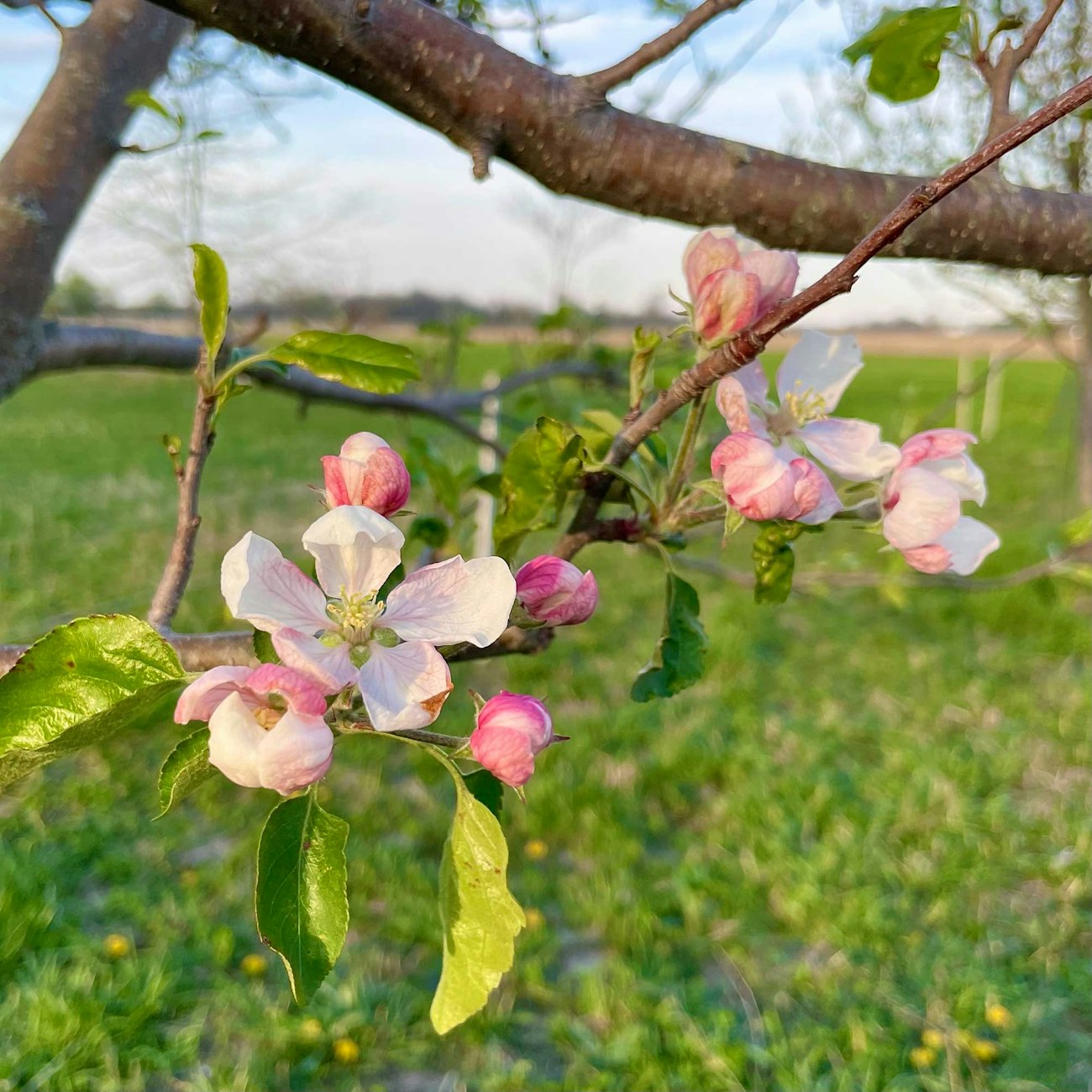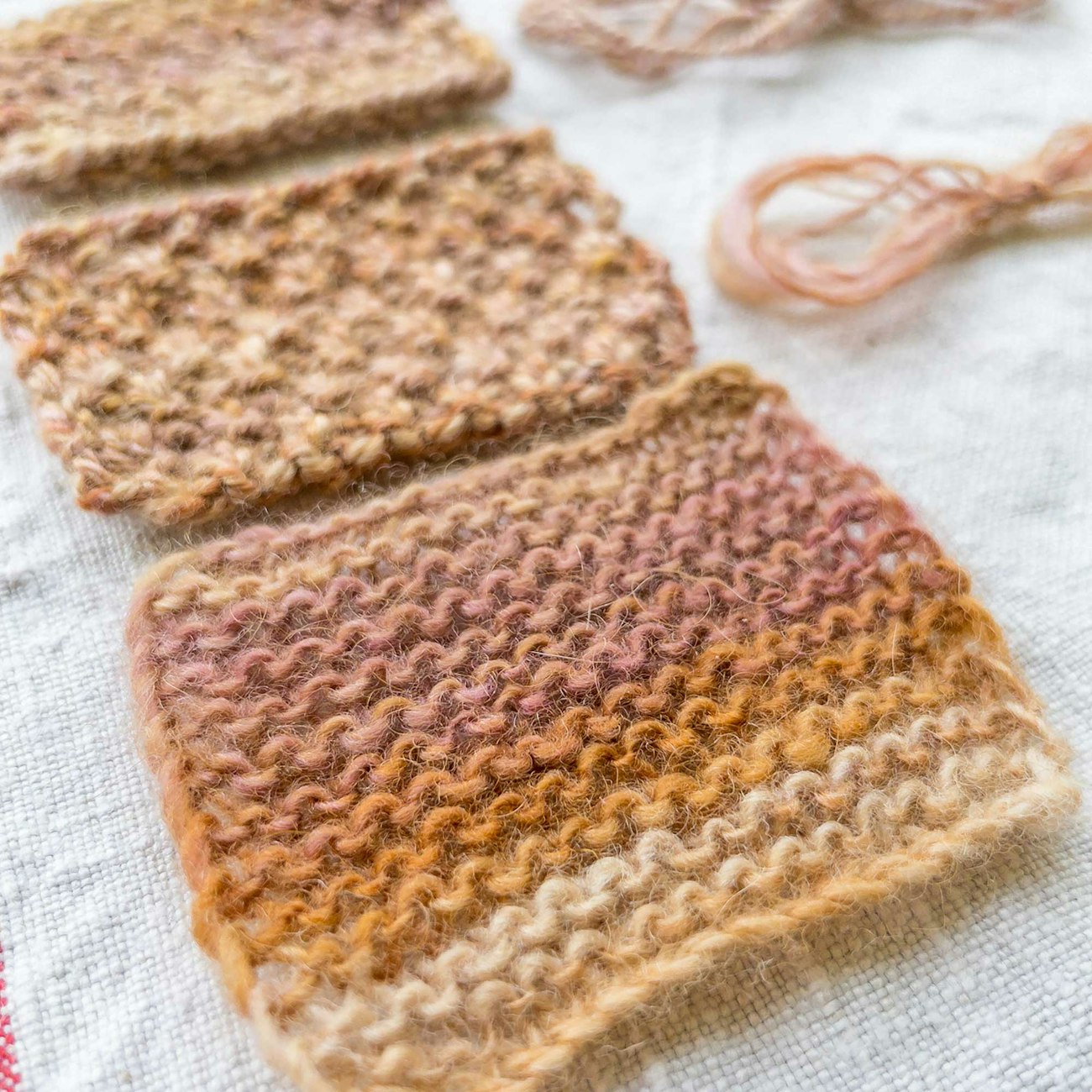Spring is the most challenging season for me each year—both exhausting and exciting. Lambing, shearing, and early grazing converge with gardens that need planting, fleeces that need skirting, and magazines that need editing! It’s a lot.
But now, as the solstice nears and summer settles in, I reached into my stash for something that was both scrumptious and unattached to a project plan. I find such joy in starting a new spin that doesn’t have a set purpose. Getting my hands on the fiber, seeing how the colors will flow, and experimenting with techniques can be such a playful approach to creativity.
 Lisa Souza named this colorway Late Harvest, but in the last few days of spring, it looks just like apple blossoms to my eye.
Lisa Souza named this colorway Late Harvest, but in the last few days of spring, it looks just like apple blossoms to my eye.
This 50/50 Merino and baby camel blend from Lisa Souza Dyeworks is brimming with opportunities to play. Fibers such as superfine Merino, camel down, yak down, cashmere, and various silks can be blended commercially into combed preparations even though the fibers are often very different lengths. This means we might spin with a short draw (worsted draw) to smooth the fibers and highlight silk or spin with the twist in the web (woolen draw) to allow short, downy fibers to bloom. We get to decide!
Here are three of the tips that I offer to students when I teach classes on luxury blends, and I pretty much use this as my own roadmap for exploration, too.
1. A Little Prep Goes a Long Way.
When very fine, delicate fibers are dyed, they don’t always pop open into a plump preparation as we might see in a robust Polwarth braid or similar. So some handpainted braids will look a bit compressed at first. We can easily loosen it up, but if you aggressively predraft blends containing fibers of different lengths, you can end up with with a less homogenous blend that spins inconsistently. This depends on the fibers in the blend.
I suggest either gently opening the blend from side to side, loosening fibers but not changing their location in the sliver, or predrafting the length of the top very lightly. I hold the top firmly with my hands about two inches apart, and I pull the fiber only an inch or less before moving to the next spot. When I begin to feel the fibers slipping past one another I stop and move another few inches along the length of the top. Here’s a post I wrote about the differences between these two methods.
 From top: braid, unbraided combed top, top that has been loosened from side to side, and top that has been very slightly predrafted.
From top: braid, unbraided combed top, top that has been loosened from side to side, and top that has been very slightly predrafted.
2. Explore Your Draft.
Both woolen and worsted drafts (and everything “semi” in between) is fair game, but you might find that some work much better than others. Give them a try, and I also find that spinning from the fold works a treat when spinning luxury blends.
3. Try Several Tools.
Once your fiber is prepped and you’ve explored a few adjustments to your drafting method, try a different spinning tool if possible. Move to a different spindle, a different wheel, from espinner to a wheel or vice versa. For me, feeling comfortable spinning is just as important as creating a yarn I like. Sometimes, trying a different tool can make all the difference in the world.
So far, I’ve tried prepping my fiber both ways, spun woolen and worsted from the fold, and moved between one of my espinners, one of my wheels, and a wonderfully balanced top-whorl spindle. I’m only just getting started.
 Tiny swatches! In front: A fulled-singles yarn knitted in garter stitch with a slipped stitch edge.
Tiny swatches! In front: A fulled-singles yarn knitted in garter stitch with a slipped stitch edge.
Check back and I’ll share some of my results when I start plying and knitting and musing on what this beautiful braid wants to be when it grows up.
Kate Larson, editor of Spin Off, teaches handspinning around the country and spends as many hours as life allows in the barn with her beloved flock of Border Leicesters.

